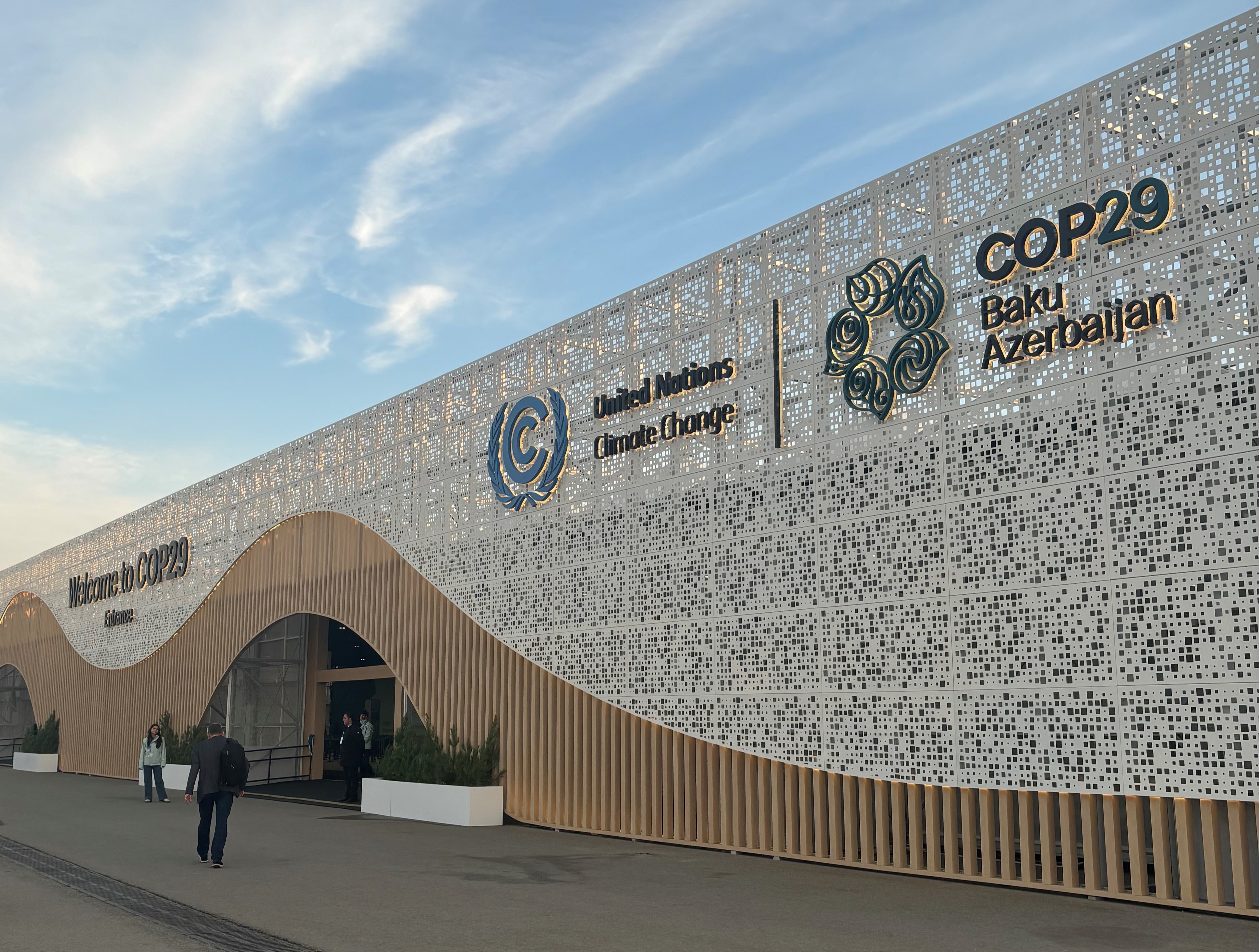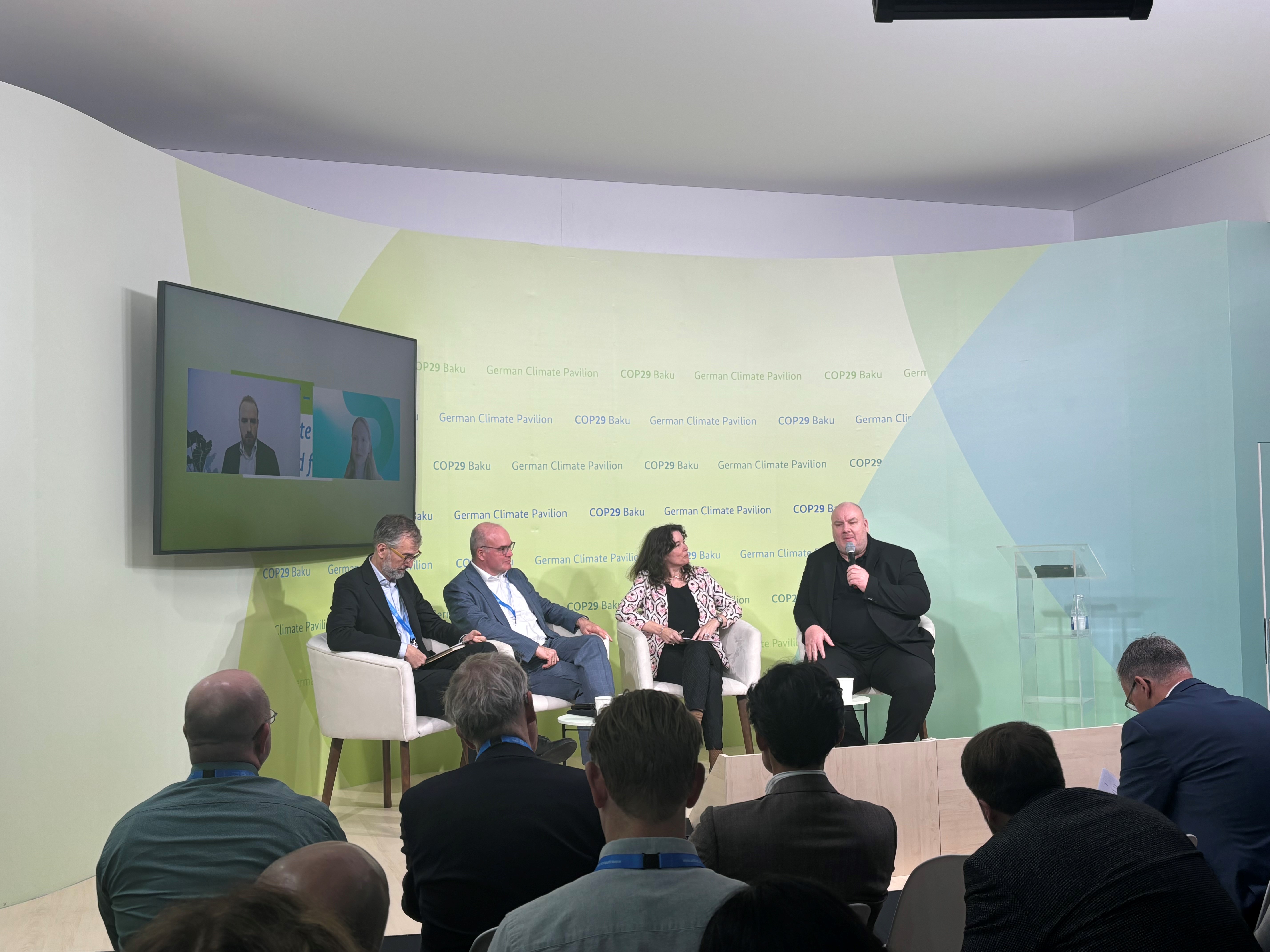COP29: What has been achieved?

It’s no secret that this year’s COP, dubbed ‘the finance COP’, is leaving many walking away disappointed. COP29 has been plagued by accusations around regression on the agreement to phase out fossil fuels and tensions over closing the financial gap needed for developing countries. The final agreement to supply developing countries with “at least $300 billion” a year is a far cry from the $1.3 trillion goal needed.
So what progress has been achieved? And as we look to COP30, what steps need to be taken to accelerate progress?
The finance question at COP now goes far beyond the requirements under the UNFCCC mechanism for Developed Country Parties to provide and mobilise climate finance for developing countries. Private sources of finance may often be leveraged through government commitments. Whether these can compensate for the slow momentum from developed countries remains a source of great anxiety for developing countries.
More than 500 projects aimed at producing near-zero materials and fuels according to Mission Possible Partnership’s Tracker are awaiting deals for finance across both developed and developing countries. 52 of the announced projects are steel, and only 6 of these have reached a final investment decision.
In Baku, whilst progress on committed finance was disappointing, it felt that collaboration among non-state actor initiatives is beginning to drive a focus on the conditions that will make FIDs in near-zero industry projects possible - carbon pricing mechanisms, the creation of markets and trade in lower emissions steel, and alignment across the standards and carbon accounting mechanisms needed to underpin these.
Financing and technical support for developing countries
The need for technical and financial support for developing economies in this regard is clear. This is after all where the lion’s share of materials demand growth is likely to come, and where the infrastructure for the transition may be most lacking. Here, some headway is already being made.
Earlier this year at the Clean Energy Ministerial in Brazil, the Climate Investment Funds launched a call for expressions of interest for its Industry Decarbonisation investment programme which aims to support low-emission pathways in developing countries for industries such as steel, cement, glass, aluminium and textiles. Up to $1 billion in funding is anticipated to support these projects.
At COP29, one of the biggest wins for heavy industry was the launch of the Climate Club’s Global Matchmaking Platform. First announced last year in Dubai, the Platform is designed to support the heavy industry transition toward net zero. By leveraging international cooperation, the platform aims to match industry players in developing and emerging economies with financers, technology and expertise to create tailored decarbonisation solutions.
Creating market mechanisms
To pave the way for such projects to be viable to mainstream finance, sustainable market policies that provide certainty for long-term investments are urgently needed. In Baku, the momentum on this took a step forward with a letter to governments led by the Industrial Transition Accelerator (ITA) calling on them to create demand for lower emissions materials. The letter was co-signed by over 50 companies and coalitions, including ResponsibleSteel, and a network of more than 700 financial institutions. Importantly, it brought together both private and public sector initiatives, including SteelZero, the First Movers Coalition and the Industrial Deep Decarbonisation Initiative (IDDI).
Some practical tools for policymakers launched in Baku were a welcome addition to the landscape – a Green Demand Policy Playbook from the ITA and with WBCSD, a Green Purchase Toolkit. These provide the start of an innovative school of public policy that is urgently needed to ensure that lower-emissions materials are soon more competitive than their high-emitting relatives.
Driving green public procurement
On the procurement side, pressure is ramping up on governments to make public procurement commitments for lower-emission materials. The IDDI, the First Mover’s Coalition, and the Net Zero Government Initiative all came together to launch a joint statement in Baku calling on governments to increase demand signals through procurement.
The United Nations Industrial Development Organisation (UNIDO) and the IDDI also presented their latest report, "The Scale and Impact of Green Public Procurement of Steel and Cement in Canada, Germany, the UK, and the US." According to the research, implementing policies in line with the IDDI’s Green Public Procurement Pledge Level 3 in these four countries alone could reduce emissions from steel procurement by 81% by 2050. It’s a powerful indication of how governments can leverage their purchasing power to drive industry decarbonisation and help create a market for lower-emission steel.
Underpinning this, IDDI launched its Green Public Procurement Guide series on assessing jurisdictional readiness for procuring low-emission materials, disclosure requirements to support market readiness, and setting commitments, highlighting ResponsibleSteel as a useful framework to meet Pledge Level 3. The Guide offers practical guidance to help governments take actionable steps to incorporate commitments to purchase low-carbon steel and concrete for construction projects into public procurement practices.

Harmonising standards
Finally, as more standards for steel continue to emerge, everyone can agree on the need for harmonisation, or at the very least interoperability, across these different standards to reduce trade friction and facilitate investment. Anything less will only serve as a roadblock to achieving net zero, a sentiment that was frequently shared during discussions in Baku.
The Steel Standards Principles launched in Dubai at COP28 are playing a critical role in driving alignment across definitions for near-zero steel and ensuring interoperability across GHG measurement methodologies. ResponsibleSteel has played an active role over the last 12 months to help establish the foundations for harmonisation and interoperability. Over 60 organisations have now endorsed the Principles and released a statement at COP29 setting the following objectives for 2025:
• Establishing a common boundary for emissions reporting across the steel value chain
• Enhancing data quality and transparency
• Developing common terminology across standards and initiatives
• Increasing stakeholder engagement globally
As part of this work, the World Steel Association has produced a methodology mapping examining similarities and differences in more than 40 criteria across around 80 standards and initiatives, including ResponsibleSteel. This mapping will be a valuable resource for identifying opportunities for harmonisation and improving transparency in the industry, something ResponsibleSteel is committed to doing.
Looking ahead
2025 will mark the 10th Anniversary of the Paris Agreement and COP30 is already shaping up to be the most critical COP since 2015. Accelerating progress on critical issues such as protecting biodiversity and ensuring a just transition will likely have a key role in discussions and there is already pressure on governments to move up their net zero targets.
It’s clear we’re still a long way from where we need to be, within the steel industry and beyond. ResponsibleSteel’s Charting Progress to 1.5°C report concludes that some 8% of the steel industry needs to be produced by near-zero transition projects by 2030 (i.e. reaching our Decarbonisation Progress Level 4). MPP’s Tracker suggests only 6 projects are currently financed. We need to close this gap. We must also avoid relying on these select near-zero projects alone. At least 15% of steel needs to be produced by lower emissions steel plants by 2030 (our Progress Levels 2 and 3) and 100% needs to be where the average of the industry is today (Progress Level 1).
As governments finalise their NDCs for COP30, they need to consider how to send a serious signal to the market that by 2050 only near-zero steel will be acceptable, and devise the mechanisms and the milestones to drive progress towards that goal.
By Savannah Hayes, Communications Manager, ResponsibleSteel


